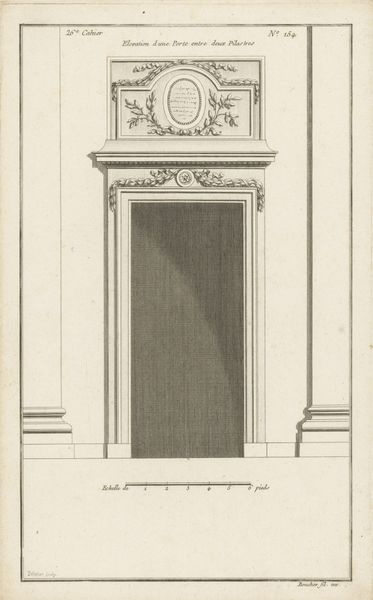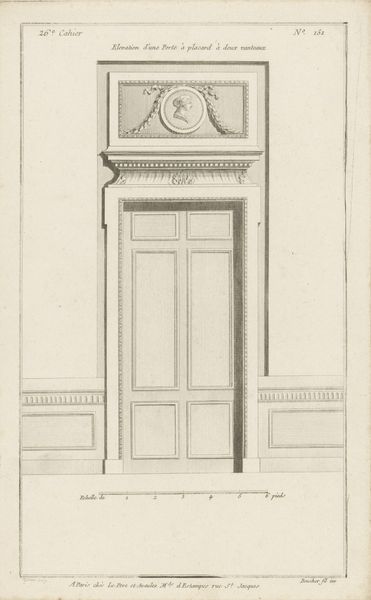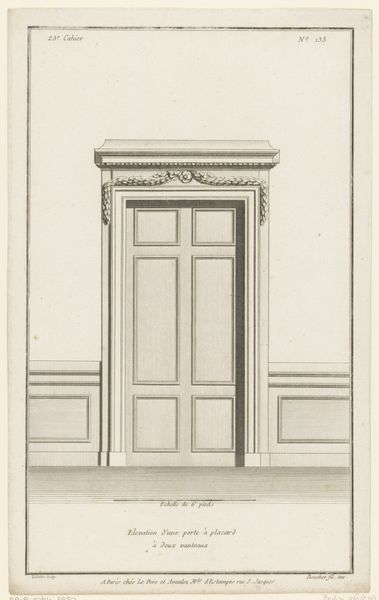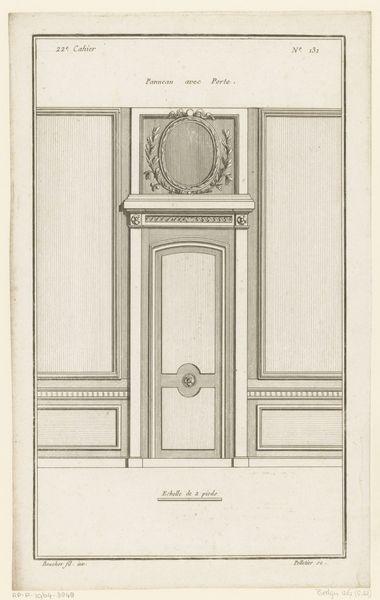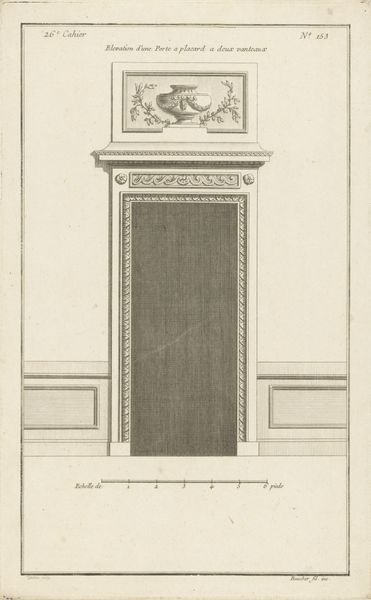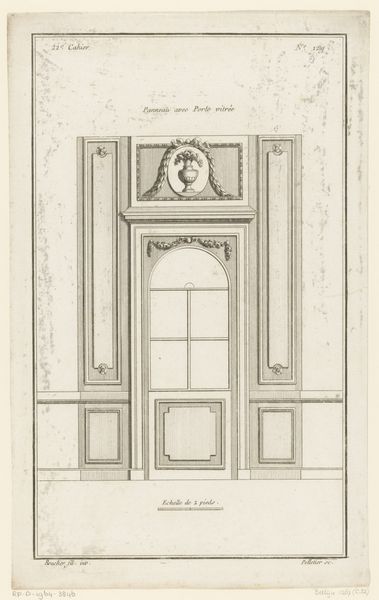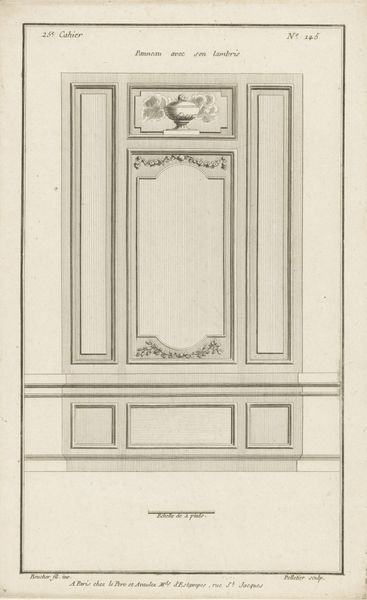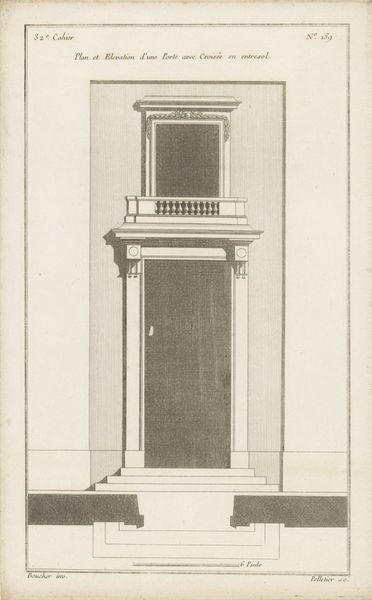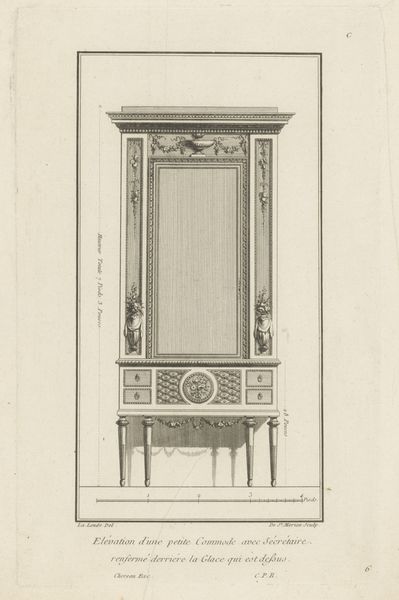
drawing, paper, engraving, architecture
#
drawing
#
neoclacissism
#
paper
#
geometric
#
classicism
#
line
#
academic-art
#
engraving
#
architecture
Dimensions: height 329 mm, width 204 mm
Copyright: Rijks Museum: Open Domain
Jean Pelletier created this design for a doorway with triangular fronton, sometime after 1736, using etching. Looking at the print, you can see the precise rendering of classical architectural elements - pilasters, cornices, and a pediment - all achieved through the incisive lines of the etching process. Etching is itself a craft-intensive process, involving coating a metal plate with wax, drawing through the wax to expose the metal, and then submerging the plate in acid, which bites into the exposed lines. The plate is then inked and printed, transferring the image to paper. In Pelletier’s time, such prints were essential tools for disseminating design ideas, acting as a kind of catalogue of possible architectural features. Consider the social context here: this wasn’t art for art’s sake, but rather a pattern offered to a client. The labor of the architect, the etcher, and ultimately the builders who would realize this design were all part of a larger economic engine. Appreciating this print means understanding its role in the world of design and construction.
Comments
No comments
Be the first to comment and join the conversation on the ultimate creative platform.
